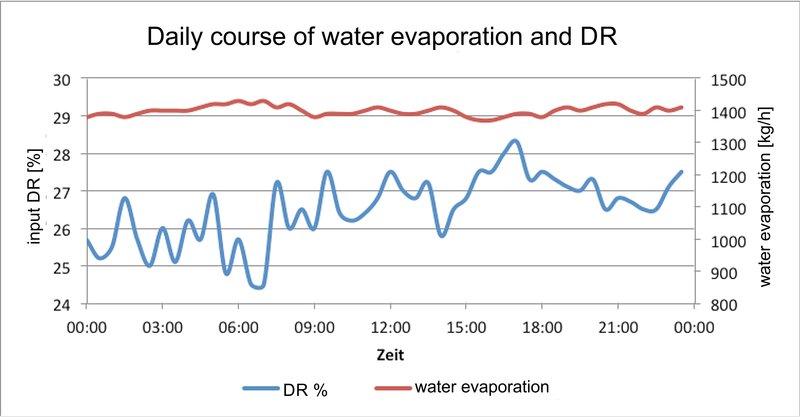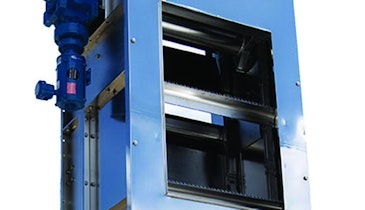Interested in Dewatering/Biosolids?
Get Dewatering/Biosolids articles, news and videos right in your inbox! Sign up now.
Dewatering/Biosolids + Get AlertsHuber Technology has developed a revolutionary control system for BT Belt Dryers. The system is able to adjust the plant throughput fully automatically to varying dry substance contents in the dewatered sewage sludge. Operator attendance is thus reduced to a minimum.
Dewatered sewage sludge, even if coming from a sewage treatment plant, does usually not show constant properties. Variations in organic content, chemical composition or polymer necessarily lead to varying dewatering results. Minor variations can normally be balanced quite well, but variations greater than +/– 1% DR per hour may impair the drying process. Throughput performance will decrease or the required degree of drying may not be achieved. The plant operates less efficiently and operating costs increase.
The gap between costs and efficiency will increase even more if larger amounts of external sludge are also fed to the plant. Jumps of several percentage points DR per hour are frequently unavoidable as the sludges are in most cases stored in a large bunker and fed to the dryer as an undefined mixture. Under these circumstances, it is a great challenge for the plant operators to run the plant at full capacity. With an increasing number of different sludge sources it is becoming virtually impossible to achieve a homogenization of the sludges with justifiable operator attention and personnel expenses.
The number of plants that accept external sludge will rise in the future due to the tendency to build large sludge centers. Huber has therefore dealt extensively with this topic and developed a fully automatic control system that continuously measures the DR content of the sludge before the sludge is fed to the drying plant. This ensures that the drying parameters can be set correctly at the moment the sludge is fed to the dryer. This method is unique on the sludge drying market.
The control system consists of a continuously working measuring system, which measures the dry substance content of the sewage sludge before the sludge is fed to the dryer. A complex control system automatically adjusts all operating parameters of the sludge drying plant to the specific requirements. It is thus possible to adjust jumps of several percentage points DR per hour reliably and without notable fluctuations in performance. The dryer can be operated continuously at the full water evaporation capacity. The following diagram shows dry substance content and water evaporation during a 24-hour measurement period on the test plant.

Despite major variations in inlet DR the dryer fully adjusts itself automatically to the required water evaporation of 1,400 kg/h.
The Huber throughput and performance control system guarantees continuously plant performance and maximum energy efficiency without the need for plant operators to intervene.
Click here to see related case studies from Huber Technology.
About Huber Technology
Huber Technology provides state-of-the-art equipment for municipal and industrial water and wastewater treatment. Our main focus is liquid/solid separation in general and headworks equipment in particular. We offer a comprehensive line of stainless steel equipment. For more information, visit www.huber-technology.com.
Visit the HUBER Technology, Inc. Storefront






